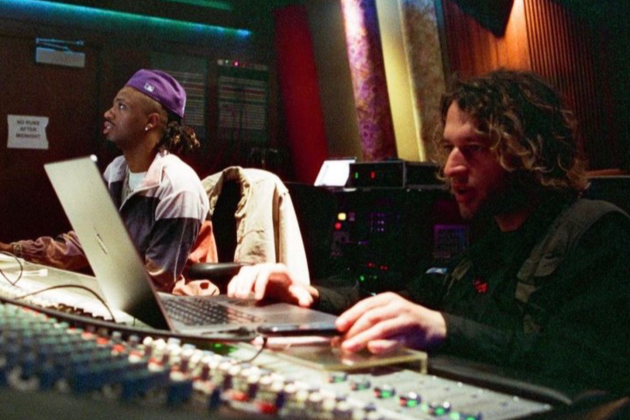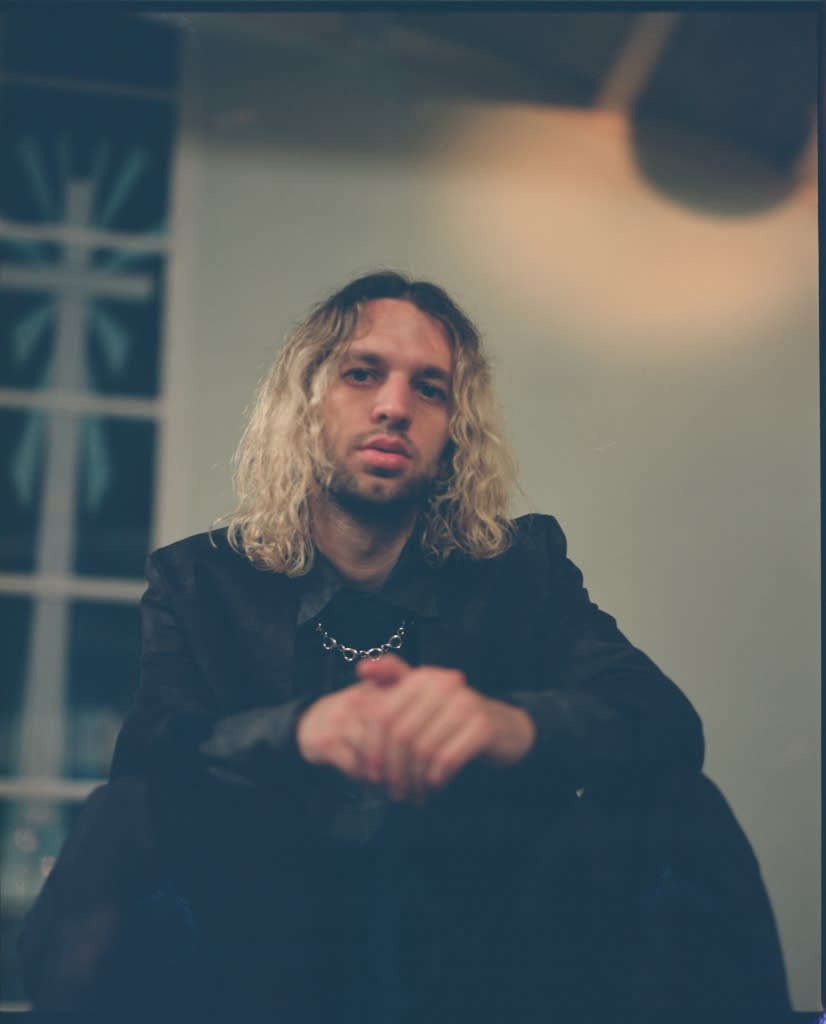Hitmaker of the Month: How Johan Lenox Brings a Classical Music Background to Metro Boomin’s ‘Creepin” and Other Essential Hip-Hop Tracks
- Oops!Something went wrong.Please try again later.
- Oops!Something went wrong.Please try again later.
- Oops!Something went wrong.Please try again later.
- Oops!Something went wrong.Please try again later.
- Oops!Something went wrong.Please try again later.
- Oops!Something went wrong.Please try again later.

Johan Lenox, Variety’s Hitmaker of the Month, is known for the supple grandeur he brings to different projects as a producer, arranger and/or composer. These range from the sublime, stringed swell of “Creepin’,” Metro Boomin’s current top 10 smash with the Weeknd and 21 Savage, to the epic orchestral and choral arrangements of Travis Scott’s “Astroworld” and Nas’ “Nasir” (both produced by Mike Dean), and tracks for Selena Gomez, Shawn Mendes and Machine Gun Kelly.
Lenox’s background is as a classical music prodigy (by 18, his compositions were heard at Boston’s Symphony Hall and New York’s Alice Tully Hall) and as a musical theater composer (his 2012 off-Broadway musical “Independents” was named a New York Times Critic’s Pick). But he exists in his own lane, one that’s expanded greatly with the release of solo projects such as his 2022 chamber-pop-hop vocal album debut, “WDYWTBWYGU.”
More from Variety
“I’ve never figured out all of the factors that brought me to classical music in the first place, save for the fact that I didn’t grow up consuming pop culture in general,” says Lenox. Born Stephen Michael Feigenbaum, he had his stage name come to him by matching his favorite composer, Johann Sebastian Bach, with the town of Lenox, MA, where he studied music at Yale.
In Lenox’s youth, modern pop, R&B and hip-hop were not a part of his listening diet.
“I was excited about film soundtracks such as John Williams’ — say, ‘Indiana Jones’ — without having seen the movie, and my parents, academics who supported my love of classical, took me to see Williams with the Boston Pops. Orchestration such as that fed my musical inspiration.”
Lenox’s long-story-short when it comes to classical composition, orchestration and production comes down to taking hardcore piano lessons (“but calling me a pianist is an insult to other pianists”) and writing studies (“I didn’t enjoy memorizing other people’s work by rote”). Still, Lenox preferred improvisation and risk to tradition.
“If you want to write for instruments, you learn how instruments work… Honestly, the majority of what I do in terms of string arrangements today, I could’ve done in high school,” he says. “You have to learn how strings function in a pop song, and how to deal with artists. That’s why I often get credited as a producer – you do intuitively have to know how songs work to do its strings, and what the job of that arrangement is within the context of each song.”

By ninth grade, Lenox’s original compositions were being performed by ensembles at the New England Conservatory of Music, with the Cincinnati Pops, and at the Berkshire Hills venue, Tanglewood. Ultimately, though, Lenox wound up feeling like an outsider within the classical world, as his tastes began to lean toward Broadway (“The Phantom of the Opera”), then the likes of Billy Joel and Ben Folds. “This was random music that crossed my path as I was in a cappella choirs at the time,” says Lenox, who also appeared on NBC’s competitive vocal program “The Sing Off.”
Everything changed when Lenox fell under the spell of Kanye West’s “My Beautiful Dark Twisted Fantasy.”
Lenox was looking for a way to interest his friends in classical music when the “symphonic scale” and textures of West’s 2010 album and its “monumental musicality” presented the young composer with an opportunity. “The ambition of a Kanye song such as ‘Runaway,’ which began with a minute of unison whole notes, super-high, on a piano for bell-like effect — that’s something you could write a (separate) piece with, and it would be well-received in the classical world…. By the time I finished grad school, I concluded that the Kanye thing was a path.”
By 2016, Lenox composed and co-created a live, 50-piece orchestra concert event “Yeethoven,” combining the works of Kanye and Beethoven to great acclaim and multiple stagings as its program touched on West’s production stylings, more reminiscent of complex classical music than hip-hop. “Kanye is a risk taker” is what Lenox told Time on the occasion of his Ludwig Von-Kanye mashup.
Along with winning attention for “Yeethoven,” Lenox began trying his luck in Los Angeles, contacting entertainment lawyers and production houses about his original songcraft. “The father of my roommate’s ex-girlfriend’s pal from homer is Gary Stiffelman, who forwarded my stuff to BMG’s Andrew Gould, who wound up managing me for a few years,” Lenox said in a rush. “I got put into sessions with other pop writers, which taught me how to manage the factory-style system of L.A.”
After meeting and working early on with Kanye collaborator Mr. Hudson, Lenox teamed with hip-hop artists such as Vic Mensa, No I.D. and Big Sean, the latter for “Deep Reverence,” his Nipsey Hussle collab, which garnered Johan a nomination for best rap performance at the 63rd Annual Grammys. Another producer, initially intrigued by Lenox from “Yeethoven,” was Mike Dean.
“We tagged Dean in one of ‘Yeethoven’s’ viral video clips, a guitar solo he had done on ‘Yeesus’ — ‘Hold My Liquor’ – then Mike just followed me on Twitter,” recalls Lenox. “Affiliating with Mike also came from his work with Vic Mensa around the same time that I did the strings on ‘The Autobiography,’ so that was helpful.”
Lenox says it was a great challenge to work with Dean on the producer’s own synth tracks, such as “This is Home,” and create cello arrangements on songs such as “Coffee Bean,” for Travis Scott’s “Astroworld.”
“I’d like to think that Mike and I have a connection as solo artists best known for our collaborations,” says Lenox, who jokes about Dean putting the arranger in stressful, odd recording situations. Take having Dean ask Lenox to cobble together choirs and an orchestra for Nas’ “Nasir” with several hours’ notice, only to have the arranger sing all of the choir harmonies himself while stacking one violinist’s parts. “With Mike, you’re just doing it,” said Lenox, enthusing about Dean’s synth albums such as “4:23” and wanting to write orchestral scores for the producer. “I’m all in. Whenever Mike wants.”
Working with live string players or folders of self-made string sections gone unused (“If you’re looking for something in D major, I probably have a pad of viola-type parts I’ve recorded”) rather than outside samples, Lenox’s specialty is making the small sound huge.
“I can make one cello sound orchestral through layering and stacking – same with my vocals – and get it done within 24 hours,” he said. “That’s why collaborators like me. I like the control that I get from single-mic-ing musicians, one at a time, then stacking and panning — the exact opposite of how classical music is recorded.”
Lenox and Dean additionally worked together on Kanye West projects such as Teyana Taylor’s “The Album” and songs such as “3Way,” along with co-writing and producing West’s “We Got Love” from his scrapped 2018 album, “Yandhi.” Considering that West was Lenox’s entry point into hip-hop, the arranger is chill in discussing their relationship and its fast pace.
“Kanye was very specific about what he wanted, but my choir vocal-stacked stuff – just me, a choir of one, stacking me a million times over – is what he really loved,” said Lenox. “I was learning to just try stuff beyond doing strings. I would go off, do my thing, and bring it back to him immediately. Once he said he dug my vocal stacks, which actually goes back to my a cappella harmony days, I use that effect on every record now, my own included, because Kanye thought it was cool. That gave me confidence.”
It is Lenox’s soaring orchestral sweep and choral vocal swell that kick off producer Metro Boomin’s current chart-topper, “Creepin’,” as well as his album release “Heroes & Villains.” It is Johan’s stacked harmonies that fill Metro Boomin’s opening track, “On Time” (with John Legend), with a rich, warm ambience.
Lenox got to Metro Boomin through Che Pope, the one-time COO of Kanye’s GOOD Music, and a producer on “The Miseducation of Lauryn Hill.” With Pope’s endorsement (“this guy’s crazy with the string arrangements”), Lenox began a collab with Metro Boomin based on the latter’s love of orchestral music. “My goal with ‘Creepin’’ and this album was to saturate it with as many orchestral sounds and choral vocal intros and outros as I could. The Weeknd one with 21 Savage is great – classic – but I’m also proud of ‘On Time.’ That’s all my vocals on the first 30 seconds of that track.”
Like his work with Mike Dean and 070 Shake – producers and artists with whom he has collaborated often – Lenox and Metro Boomin are now a tight fit for future projects.
“Anyone can put strings on a song once, but whether it’s the orchestration that I brought to ‘Creepin’ or the stacked vocals for ‘On Time,’ Metro appreciates what I bring – that monumental cinematic sound that Kanye thought was so cool, and that I gave Big Sean when he worked with Nipsey. That’s a nice trademark that no one can steal from me.”
And while the opulently displayed strings and haunting choral stacks of Metro Boomin’s “Heroes & Villains” can also be heard on Lenox’s solo mixtapes (2019’s “Everybody’s Cool but Me”), EPs (2021’s “World on Fire”) and classical instrumental albums (2022’s “Isomonstrosity”), it is solo-voiced pop and chamber hop that’s at the center of his 2022 full album artist debut, “WDYWTBWYGU” (an acronym of “What Do You Want To Be When You Grow Up”) and his just-finished next album, “I Guess We’ll Find Out.”
“Me singing my own songs was always a part of my plan ever since I started taking industry meetings in L.A.,” said Lenox. “I was aware of producers who became artists in their own right. That path made more sense to me than open mics or shooting in the dark and hoping to get discovered. Also, I wasn’t a Stan who could identify pop signatures, I was a classical music person who randomly discovered this one Kanye album and had an epiphany. So, I needed to work with other artists to see how shit happens, how they create, make the music that I hear in my head…. What I do is production and not really arranging.”
How that works on “WDYWTBWYGU” and “I Guess We’ll Find Out” finds Lenox utilizing one violinist and one cellist pitched into different keys, then layered for what he called “that rich, uncanny, alien string ensemble sound that you can never achieve live.” Lyrically, Lenox’s self-penned tales touch on the frustration and loneliness he sees inherent in his generation. “Spending time on Twitter and watching people worrying all day, every day about the future will do that, especially if you can goof on it.”
For Lenox, the ultimate of aesthetic and career goals is to keep producing and arranging for other artists while making his own solo records, pop and beyond. “I’d love to have this career where the same audiences who see my Broadway shows also come to my classical music concerts and my pop shows, while listening to the signatures I bring to other artists like Mike Dean, 070 Shake and Metro Boomin,” says Lenox. ”And I want to bring straight-up contemporary classical music to the masses without selling it short and dumbing it down.“
Best of Variety
Tony Predictions: Best Musical -- Four Stand Poised to Give ‘Kimberly Akimbo’ Some Competition
This 'Fast and Furious' Arcade Cabinet Allows You to Step Behind the Wheel as Dom Toretto
Sign up for Variety’s Newsletter. For the latest news, follow us on Facebook, Twitter, and Instagram.

